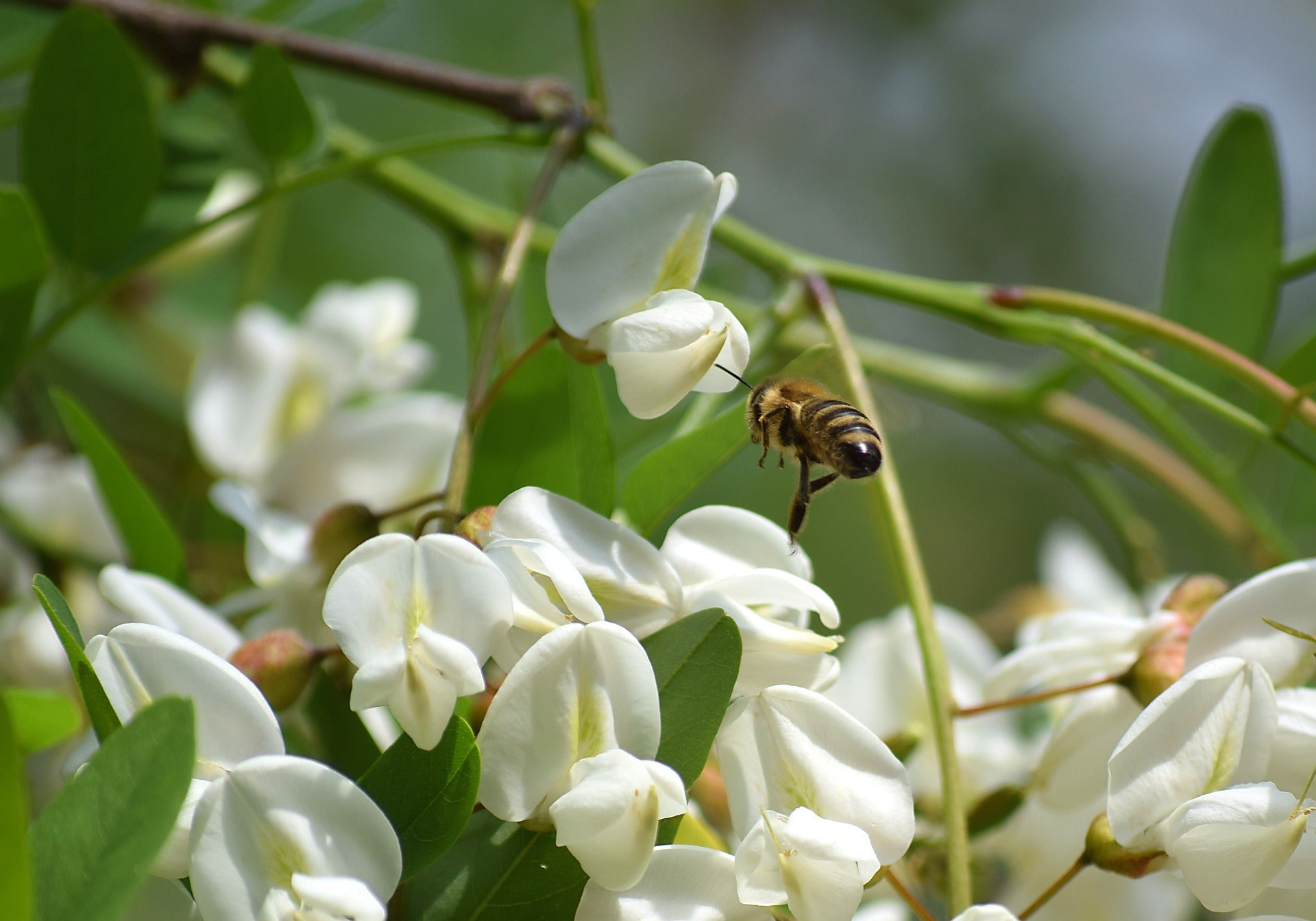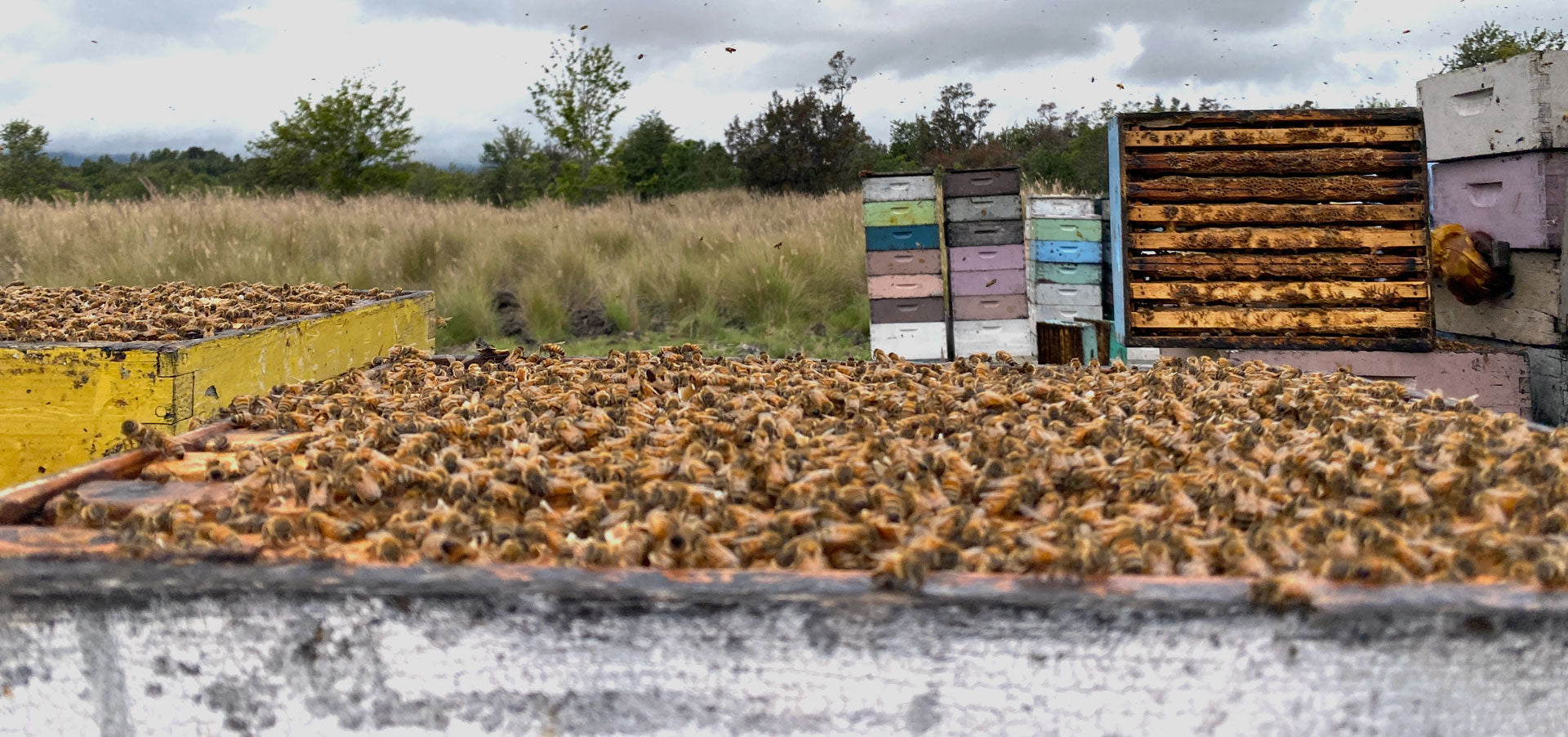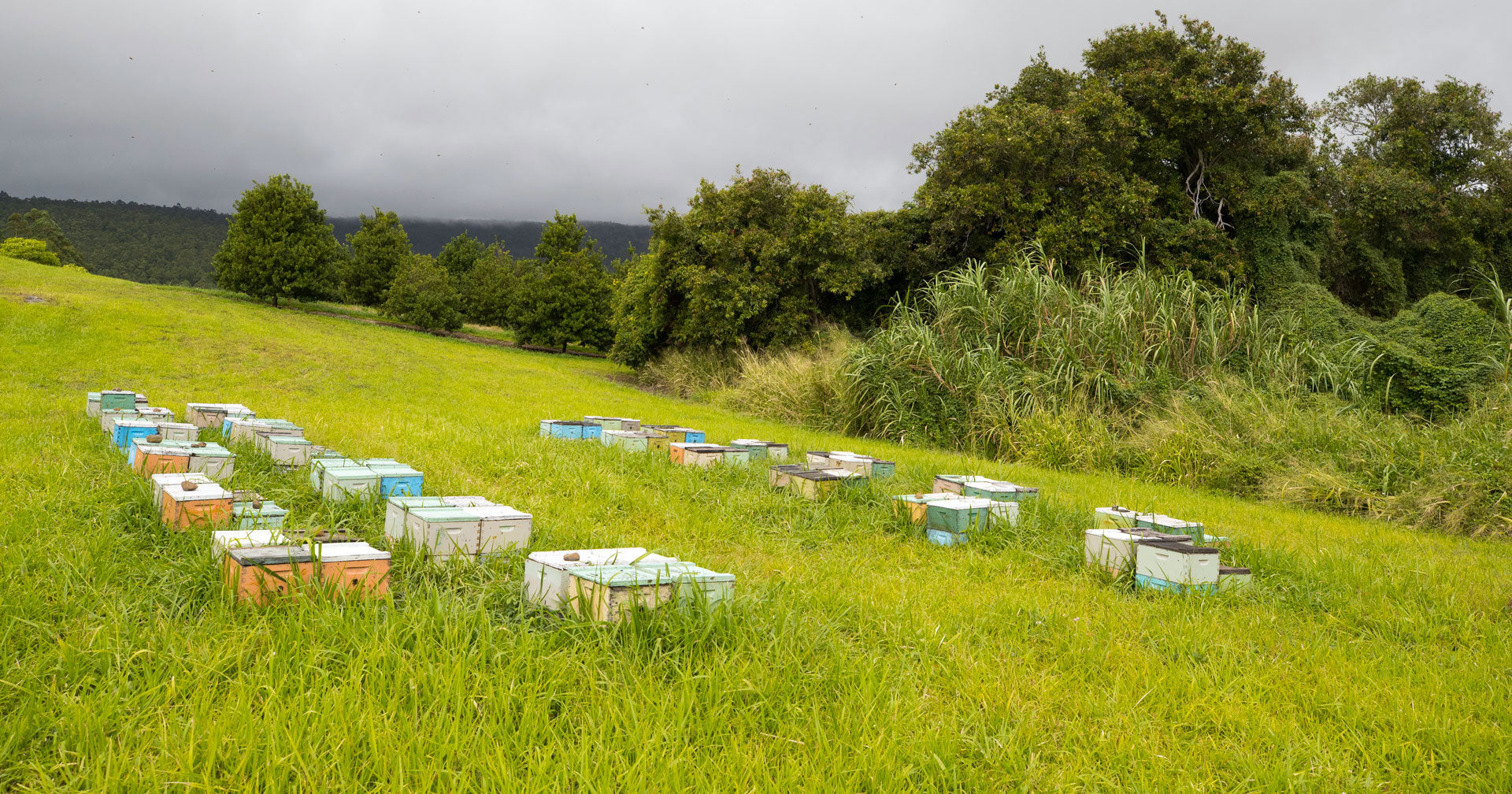Every spring from April to June, the Robinia pseudocacia, commonly named the black locust tree, blossoms. The inflorescence of this Eastern American native has a sought-after and delicate fragrance reminiscent of a cross between jasmine and pea shoots.
During its blooming period, honey bees gather nectar from the exquisite and charming blooms, eventually creating one of the most effervescent and delicate honey varietals commercially available: black locust honey, more widely known as acacia honey.
The fleeting yet highly fragrant and sweet aroma of the black locust blossom becomes the backdrop of flavor for the honey derived from its nectar.
Acacia Honey: What's in a Name?
The deciduous black locust tree, a member of the Fabaceae (legume) family, is also known as the false acacia due to its compound leaf structure that is similar in appearance to tropical and subtropical acacias. Acacia honey seems to be a bit of a misnomer, then, since not a drop is derived from one of the many species of acacia. While you may come across jars correctly labeled Black Locust Honey or simply Locust Honey, especially by local beekeepers in the United States, Acacia Honey is renowned—and prized—around the world. So what's behind the confusing and misapplied name?
It turns out that there's more to its name than meets the eye. The name on the label is actually a clue about who produced it. Despite black locust (Robinia pseudocacia) being native to North America, it was widely planted in Europe where some of the largest forests exist today. And of course, the common names for the tree vary by language. The name false acacia is common in England. The Spanish call it Robinia and in France, Italy and Eastern Europe, where the most honey is produced, the tree is commonly known as acacia.
Ironically, we use a European name for an American native plant because the vast majority of acacia honey sold in the U.S. is imported from Europe. But since terroir influences the flavor of honey, the name is also a clue about its taste. If you want to find honey produced in the U.S., look for black locust honey or even American acacia honey.
Irrespective of the name used or the terroir, acacia/black locust honey is a unique varietal with a taste adored and sought by foodies, culinary enthusiasts, and folks who love its light and pleasant taste.
Acacia Honey Flavor Profile
The backdrop of flavor for honey is that of the plant or more specifically the essence of the bloom. Being part of the legumes family, you might expect acacia honey to bring a sweet, earthy, nutty, and tangy flavor to the palette. Some of those qualities may show up in the honey's taste and texture, but when it comes to acacia honey's complete flavor profile, there is much more to the story.
The taste of acacia honey is complex, with variabilities dependent on cultivar, terroir, and production practices. Here is the full flavor profile of acacia honey.
Sweetness level: lightly sweet
Range of flavors:
- Vanilla
- Fresh hay
- Marmalade or concentrated citrus
- Peas
- Jasmine
- Tropical fruits like pineapple and kiwi
- Vinegar
- Nutmeg
Smell, Color & Texture Of Acacia Honey
What does acacia honey smell like?
Taste and smell go hand in hand, and on the nose, acacia honey's complex bouquet shows up with warm notes like almond, vanilla, and nutmeg, bright tropical notes, and occasionally a hint of yeast.
What color is acacia honey?
Acacia honey is light on the color spectrum, appearing almost transparent to straw yellow. Darker acacia honey might indicate fermentation from a higher water content which can occur when harvested prematurely.
What is acacia honey's texture?
Acacia honey has a thin silky smooth texture that slides off a spoon. Because of its high concentration of fructose, acacia honey does not crystalize.
These subtle flavors and a silky smooth texture make Acacia Honey a varietal that pairs nicely with a wide range of foods.
Acacia Honey Pairings
Many people purchase acacia honey as an accompaniment to their morning tea. While acacia honey is a delightful sweetener for green, white, black, and herbal teas, acacia honey pairs with a vast range of sweet and savory foods. Here are just a few acacia honey pairings:
- Pair Acacia Honey with fresh and mature cheeses, particularly salty varietals and goat cheeses from Italy and France, like Pecorino, Ricotta, and Chevre.
- Use it in addition to chutney alongside fresh fruit and nuts for a stunning cheese board.
- Breakfast foods pair perfectly with acacia honey. Add some to your morning yogurt or muesli spread onto a croissant or toast, or pour over pancakes or crepes instead of maple syrup.
- Acacia honey sweetens tea, lemonade, coffee, and cocktails.
- The flavor profile of acacia honey pairs nicely with nuts and seeds, making it great for snacks and main courses.
- The concentrated citrus in acacia honey makes it an excellent accompaniment to fish. Use it as part of a glaze for your favorite teriyaki salmon recipe.
- Acacia honey is often used as an alternative sweetener for baked goods and works well in a traditional honey cake.
Is Acacia Honey Better Than Other Honey?
Many qualities in acacia honey make it a sought-after varietal. It is important to note that finding a quality product means sourcing a quality producer. We mentioned above that many people who sell acacia honey in the United States don't produce the honey themselves; they import it, making it much more difficult to oversee the quality of that product. We recommend finding a producer who utilizes practices similar to ours at Big Island Bees. We tend to our hives with deliberate care for the health of the bees and environment – without the use of chemical miticides or artificial feeds, and we only sell honey from our own hives.
Regarding health benefits, acacia honey has a high concentration of flavonoids providing a rich range of antioxidants for health.
The nutritional facts of acacia honey are similar to those of other honey; each tablespoon is 60 calories with about 17 grams of sugar.
One of the best ways to determine if acacia honey is better than other honey is to have your honey tasting and decide for yourself! Conducting a honey tasting is not only investigative but delicious and fun. You can compare acacia honey with other mild honey varietals like clover honey or Ohia Lehua honey or include acacia honey in a lineup with other contrasting varietals like buckwheat or macadamia nut blossom honey.
Not sure how to conduct your own honey tasting? Check out our post on (coming soon).
Or visit us! We conduct honey tastings daily as a complimentary addition to our daily tours. Join us in person on the Big Island of Hawaii, an experience you'll never forget.
Acacia honey is delicate, sweet, and fragrant, with a complex nose that remains subtle and refined, making it a welcome addition to any honey collector's pantry.



